Reviews
Agnès Varda
USA / France, 1969
Credits
Review by Leo Goldsmith
Posted on 27 July 2010
Source MUBI.com
Related articles
Lions Love review by Matt Bailey
Categories Viva Varda: The Films of Agnès Varda
On first blush, Lions Love is easily pegged as Agnès Varda’s hippie movie: a mildly psychedelic bauble made with several afternoons in a Hollywood bungalow to spare and without the need for much fore- or after-thought. Certainly for those allergic to the more voluble forms of late 1960s American counterculture, the film begins inauspiciously enough with its introduction of three of the film’s central protagonists: the second-tier Warhol starlet Viva, and James Rado and Jerome Ragni, the composers of Hair. Uttering faux-witticisms (“the sharp mind is the death of love,” “I hate every form of entertainment—including living!”) and discussing the philosophies of “a new religion called the Cosmic Climax” (“Love is a fucking bore, sex is a fucking bore, fucking is a fucking bore, the word ‘fucking’ is a fucking bore—so let’s quit fucking and just have the Cosmic Climax”), the trio inelegantly flops about, groping and goading one another into greater and greater heights of hamming.
“Can we be actors and be in love?” the trio asks—as if it weren’t by now abundantly clear to everyone making and watching this film that the subject was going to be films and reality and what’s the difference, man. After so much winking at the camera, the names of Hollywood starlets are invoked - Garbo! Lamar! - and Varda interjects a playful montage of various forms of “star” iconography (including Stars of David, stars on the Walk of Fame, and signs for Los Angeles streets named after movie stars). Then, we are back in Viva & Co.’s cozy nest of hippie decadence, watching them splash about naked in their swimming pool while trading false reports about the change in the major studios’ stock market value.
Strangely, though, after such a trivial - and, for some, simply grating - introduction, Lions Love slowly metamorphoses into a precise if playful film about the United States in 1968—and a surprisingly clear-eyed and intelligent one, at that. The casting of Viva and her Hair compatriots notwithstanding - and Varda’s self-crediting as “Mama Lion” aside - the film is both a coherent capstone to the director’s sojourn in California and a portrait of its era as daring and cogent as Antonioni’s Zabriskie Point, made one year later, which was widely dismissed for its delicate balance of politics and pop, amateurism and formal austerity. Similarly, Varda’s film teeters on the edge of total absurdity, running roughshod over cinematic conventions of all kinds while retaining a lucid outsider’s perspective on its milieu.
After the woozy frivolity of the film’s prelude, Lions Love only really gets underway with the arrival of a breath of brisk New York air: filmmaker Shirley Clarke, playing herself, turns up in a fabulous faux-leopard cape, Zorro hat, and enormous sunglasses. While Clarke is equally eccentric as her California counterparts - prone to dropping not-so-casual remarks like, “You know the New York filmmakers think that Langlois started the revolution,” and “Which comes first: the movie or the reality?” - it’s clear from her raspy, nicotine-tinged voice that hers is a contrastingly no-bullshit kind of energy. Soon she is awkwardly but happily thrust in with Viva’s crew: the rather lazy premise, introduced in crude, but mercifully quick expository dialogue, is that Shirley is in town because “someone thought it would be funny if [a] New York underground filmmaker made a movie in Hollywood.” Therefore, she must bunk with Viva in the “Villa Fake” - a bungalow adorned with stuffed birds and plastic plants and fruit - because the Bobby Kennedy-Eugene McCarthy Primary is underway in California and all the hotels are full.
This places the events of Lions Love in June of 1968 in Los Angeles — the same week Sirhan Sirhan would assassinate Kennedy (at one of the hotels Clarke mentioned earlier: the Ambassador) and Valerie Solanas would shoot Warhol in New York City. Once this point is made sufficiently clear, the film slowly begins to deepen, as Varda reveals that the theatrical hippie drop-out culture is only one of many aspects of this milieu that she finds interesting and probably not the most important part. To be fair, the scenes of Viva, Jim, and Jerry become considerably quieter and more visually interesting, even beautiful, as the film develops, but Varda also helps this process along by interjecting knowing commentary - personally announcing, “This is a flashback” to introduce a satirical scene of hopelessly uptight studio-boardroom haggling - and including shots of newspaper headlines as well as a brief documentary segment about local unrest amongst hippies and squares at Malibu Beach. These are events to which Viva and gang remain completely oblivious while they lounge around, usually naked, and turn everything - even the making of the morning coffee - into a protracted, camp performance. (“Living together is ensemble theater,” declares Jim.)
What sets out as a film about Viva’s blissed-out hippiedom slowly proves itself to be a remarkably levelheaded look at the deep tensions in American culture at the time: the tensions between this sort of dreamy, apolitical apathy and the earnest struggles of a committed, if free-spirited independent artist. This is in fact the explicit theme of nearly every American “head film” of the time - Easy Rider, The Last Movie, and even the Monkees’ Head - the contradictory desires to both change the world and to drop out of it. Using the contemporaneous events of the Warhol and Kennedy shootings and the duality of Los Angeles as both a factory pumping out nostalgic fantasy and a site of great social and political upheaval, Varda’s film is able to suggest the centrality of this conflict at a number of levels simultaneously: in Warhol’s pop-artworld, Viva’s hippie Shangri-la (whose motto is a line from Capra’s Lost Horizon: “I believe it because I want to believe it”), and in Varda’s own engagé filmmaking practice.
After all, with her petite frame, cropped hairdo, and identical occupation, Shirley Clarke clearly functions as a cipher for Varda in Lions Love. Late in the film, this is made still plainer in a seemingly spontaneous scene in which Shirley’s character, stressed about the pressures placed on her by the Hollywood producers who have hired her, attempts suicide. Shirley throws back some pills and immediately chokes, breaking character: “I just can’t do it, Agnès…. This whole thing is not my style.” Without cutting, and with visible irritation, Agnès puts on Shirley’s wardrobe and steps in to do the scene for her - “I’m just trying to make a movie, Shirley!” - until Clarke relents and steps back into character. As fourth-wall-breaking scenes go, it’s not a subtle one, but it effectively articulates the personal, political, and professional stakes of making art in a fractious time: the desire for unfettered fantasy and mythology, which keeps butting up against the urgent demands of reality.
More Viva Varda: The Films of Agnès Varda
-
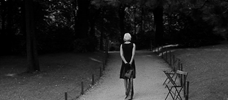
Cléo from 5 to 7
1962 -
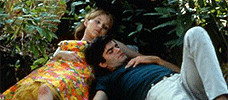
Le Bonheur
1964 -
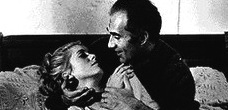
Les Créatures
1966 -
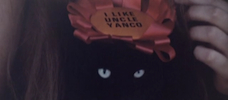
Uncle Yanco
1967 -
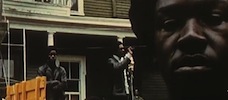
Black Panthers
1968 -
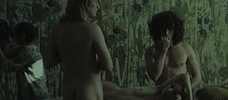
Lions Love
1969 -
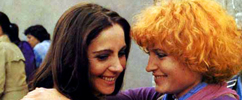
One Sings, the Other Doesn’t
1977 -

Daguerréotypes
1976 -
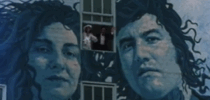
Mur murs
1981 -
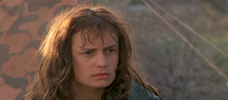
Vagabond
1985 -
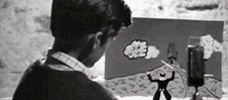
Jacquot de Nantes
1991 -

One Hundred and One Nights of Simon Cinéma
1995 -
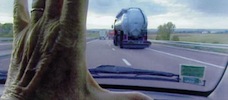
The Gleaners and I
2000 -
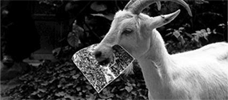
Cinévardaphoto
2004 -
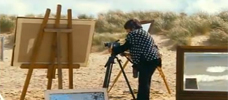
The Beaches of Agnès
2008
We don’t do comments anymore, but you may contact us here or find us on Twitter or Facebook.



